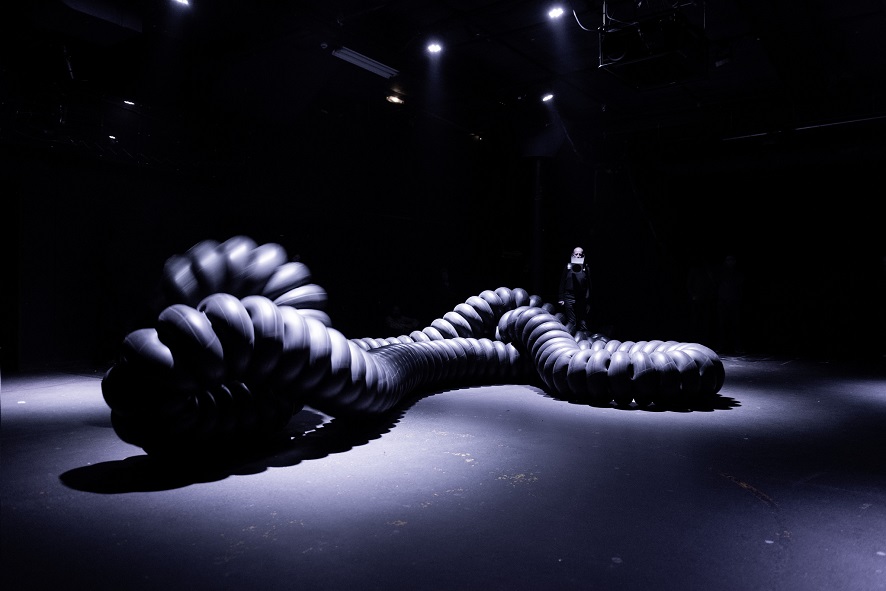Deep underground in the huge facility hosting the festival for what is now the fourth year in a row, in the old bunker below POSTCITY Linz, an incredible expanse of empty rooms and hallways is gradually filling up with an impressive array of media art. The winding corridors and spacious rooms—actually built to shelter people in an emergency situation—will once again serve as the setting for the exhibition elucidating the Ars Electronica Festival theme.
This year it’s Error – the Art of Imperfection, a double title that’s mirrored by the exhibition’s physical layout. As in prior years, POSTCITY’s subterranean levels will be the setting for artistic works themed Error in Progress; the facility’s upper level will host Error, Fakes & Failure, which proffers scientific-technological takes on mistakes, failure and deviations from the norm.
In this interview, Gerfried Stocker, Ars Electronica artistic director, and project manager Christl Baur tell us what we can look forward to.
The 2018 festival theme is Error – the Art of Imperfection. What does the exhibition have in store for us?
Gerfried Stocker: This year’s theme exhibition is divided into two parts. One is situated in the 1st Upper Level of POSTCITY Linz and is entitled “Error, Fake & Failure”; the second part, “Error in Progress,” is in the underground bunker. So, this year’s festival is characterized by a double theme: Error and the Art of Imperfection. Accordingly, in “Error, Fake & Failure” on the Upper Level, we’re primarily showing projects dealing with the phenomenology of errors. These are developments that, indeed, play out in the context of art and technology, art and science, but in which the intention, the approach to the theme, rather comes from the scientific-technological side. The projects on display in the Lower Levels, subsumed under the heading “Error in Progress,” reflect this entanglement of art and technology, art and science, but in which the approach, the motivation of the work, comes from an artistic perspective.
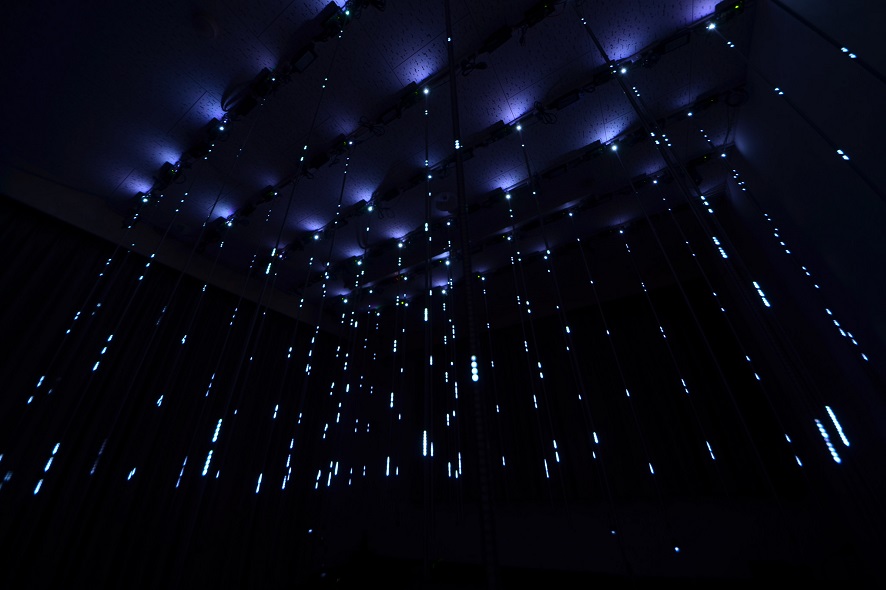
In the rain. Credit: Yuki Anai, Hideaki Takahashi
So how are artists coming to terms with this theme?
Gerfried Stocker: As diversely as the theme itself suggests, so to speak! We’ve laid out various vectors with which we’re limning multifarious ideas pertaining to this year’s festival theme. The interesting thing is—proceeding from the actual definition of error—is that an error isn’t a mistake or a blunder; rather, it’s a deviation from the norm, which is to say from that which was expected. That’s the main vertical vector in this thematic orientation. On both sides, there’s an outgrowth—either in the direction of error, failure, mistake, meaning towards something really having gone awry; or into the area of fakery in which something has intentionally been falsified. This is an excellent opportunity to unfold the thematic spectrum of error—spanning a narrative arc from inadvertent slip-up to intentional deceptions and fakes. Both are incredibly important topics with respect to current developments in technology and society. To this can be added the fact that artistic positions quickly enable us to go beyond the stage of pointing out errors and commenting on them. The point is to correct errors and erroneous developments. How does one go about switching to another track, setting an alternate course? This aspect of counterproposal is something that is very important in the process of artistic confrontation.
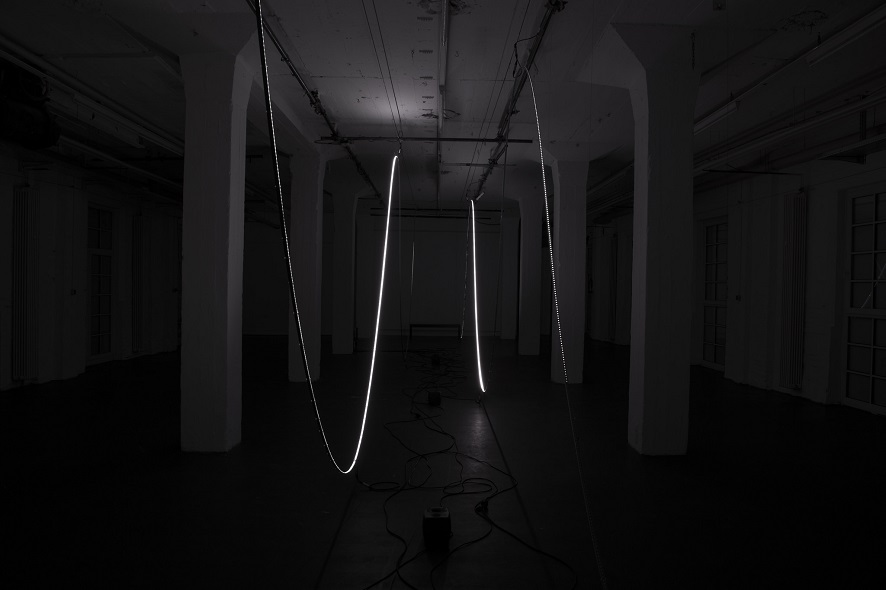
the weight of light. Credit: Martin Hesselmeier, Andreas Muxel
So there are also a good many political works in this exhibition.
Gerfried Stocker: Yes, this is a very important aspect. We’re witnessing an aggravation of the political situation worldwide, not only in the USA but also here in Europe. We have the worsening data scandal involving Facebook & Co., and this has made it increasingly clear that these socio-politically critical positions have to play an essential role at the festival and in the elaboration of the theme. This is—to get back to the question of how artists are dealing with this—a decisive point: For us to investigate how things have gone wrong, to show where sore points are and thus lay a hand on them, to analyze but also to go one step further and point out possibilities for counteracting.
Christl Baur: An excellent example here is the work of Forensic Architecture, which constitutes a central part of the exhibition. Forensic Architecture invests a great deal of time and effort in an investigative procedure to call attention to political and sociopolitical currents. At the festival, we’re focusing on works that deal with the subject of migration in and around Europe in recent years. This isn’t just a matter of how refugees make their way to Central Europe; it’s also about which people are involved, from gangs of smugglers to the entire economic system that has grown up around this phenomenon and is profiting from it. At the same time, we’ve witnessed a development in recent months whereby refugee ships in the Mediterranean are suddenly refused permission to dock and the refugees are forbidden to set foot on Italian soil. Instead, they’re sent back out to sea. What does that say about our society? Forensic Architecture works in highly anticipatory fashion with these issues and attempts to do investigative journalism and establish it as an art project.
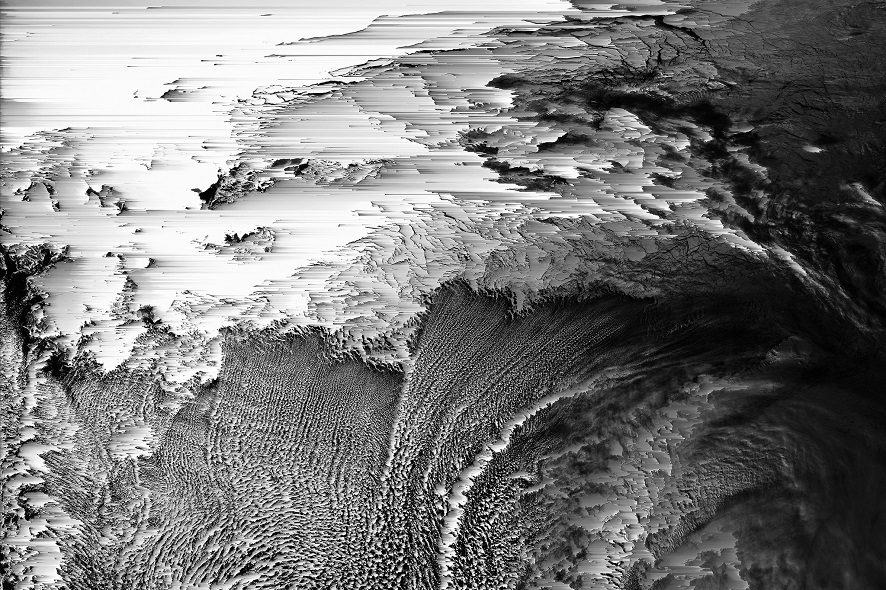
Fake Noise. Credit: Anatol Bogendorfer
Gerfried Stocker: Another good example is the work by Anatol Bogendorfer, who deals with the phenomenon of hate speech. In a very gripping, impressive way, he has used acoustic, musical methods to engender a spatial mise-en-scène to convey a feeling of how it feels to be subjected to a concerted bombardment of the hate and contempt so often manifested by comments posted on social media. This is one of those works that makes you realize that artists really are dealing with the question of what has gone wrong. Why has this dream of the internet as a realm of freedom become a nightmare of fear and hate?

The Art of Deception / Isaac Monté, Toby Kiers. Credit: Hanneke Wetzer
This sounds very gloomy, just like the interior of POSTCITY Linz, the decommissioned postal service logistics facility. And a portion of the exhibition is set in the building’s underground bunker…
Gerfried Stocker: In the final analysis, it’s natural that these powerful, characteristic interior spaces exert an influence on selecting and curating the projects on display. One intentionally seeks works that can do justice to these very large, dominant spaces. The beautiful thing, however, is that we also have lots of nooks and crannies that one passes through almost like navigating a labyrinth. These are factors that have to be taken into account in staging this show. Here, it’s easier to channel the flow of visitors than it is in a museum or an exhibition space. And one can very effectively weave a narrative thread through the array of works.
Christl Baur: And take the characteristics of the space into account! Works are accentuated by the space and vice versa. The physical space is part of the mise-en-scène.
Gerfried Stocker: But sometimes it’s also an absolute nightmare because the spaces are so specific. How do you deal with the acoustics? What about the lighting and the height of the ceiling? It’s a huge challenge for the artists too, because we have to demand a lot of flexibility on their part. Nevertheless, we’ve had such great experiences in this respect in recent years that we can now go about this with a great deal of self-confidence.
Christl Baur: And others also have confidence in our ability to know or develop a feeling for how works and spaces can be configured to maximum advantage.

Remains. Credit: Quayola
Describe a few more highlights of the Error in Progress exhibition.
Christl Baur: First off, the exhibition actually consists of three focal-point topics. We’ve already discussed the sociopolitical facet. A second area of emphasis is “Error of Ecology.” We’re clearly headed for disaster; global warming looms larger and larger on the horizon. On this subject, there’s a very beautiful work, “Aquaforensic,” that Robertina Šebjanič and Gjino Šutič developed during a residency here. They investigated water pollution and showed the effects of drugs that pass through human beings and get into the water that way. This applies to both illegal drugs and prescription medications. How do they change the structure of the water? What impact do these substances have on creatures that inhabit the water? This work shows an example of how we influence the environment, how we’re changing it.
Gerfried Stocker: One certainly could divide “Error in Progress” into three sections—errors in the way we deal with ourselves as a society; how we deal with our habitat, with our environment, with our planet; and how we deal with ourselves as human beings.
On the subject of this last topic, there’s a series of projects that entail biotechnological scenarios. In the question of intentional modification, the adaptation of the human, the natural, the biological as we are increasingly seeing with the proliferation of biotechnology and genetic engineering—inherent in this is also the matter of establishing norms. When I attempt to use the means of biotechnology and genetic engineering, this whole spectrum of means including cosmetic surgery, to enhance people’s appearance, then that means that I have a particular norm. And, therefore, that everything that deviates from this norm is regarded as an error, as a negative manifestation. This is a dire development, since a society that conforms to a norm, a human being, an organism that’s standardized and optimized, can act and develop further only in tightly circumscribed channels. This is one of the greatest threats on the horizon for that which we describe as human. I’m nowhere near as afraid of artificial intelligence as I am of scenarios that are made possible by biotechnology and genetic engineering.
Christl Baur: One example here is a work entitled “The Art of Deception” by Isaac Monté and Toby Kiers. They use decellularized pigs’ hearts to create a sort of framework of a human heart to which other cells can be applied. This has to do with possibilities of changing our body from within. We’re not optimizing by means of external sensors or in the form of artificial joints; instead, we’re starting to optimize the human body from inside. At the same time, a project like this has tremendous scientific relevance; the research potential of such fields as synthetic biology is extremely high.
Gerfried Stocker: It’s also a highly aesthetic installation! In our context, talk always focuses on projects’ scientific, thematic references, but we shouldn’t ignore the fact that, especially in the interior spaces of POSTCITY, this enormous aesthetic impact plays an extremely important role because it helps us in our initial approach to this complex of issues. The theme exhibition—particularly where it pertains to science—very quickly gets to a point at which spectators say: “I don’t understand this, and it’s kind of freaking me out.” And they immediately withdraw. This atmosphere, as well as the aesthetic engendered by this impact, that’s evoked by artistic works, is, on a second level, an excellent vehicle to motivate us to confront the ideas behind these works. And I believe this is something that people felt very strongly as they made their way through the exhibitions on POSTCITY’s Underground Levels in recent years—when festivalgoers reemerge, this energy that they suddenly have, all of these inspirations they imbibed and the ideas that they were exposed to during this tour through the exhibition! Keep in mind—this is a huge venue; it can take up to two hours to completely explore this part of the theme exhibition. This magnitude and the intensity of the impact are essential to the character of this experience, and the audience’s enthusiasm is attributable to them. After all, this isn’t some run-of-the-mill themed exhibit. When someone who has never been exposed to Ars Electronica thinks about a themed exhibit, the picture they have in mind is a gallery or museum situation, and not really being taken on an excursion…

Dead Pixel / Friedrich Boell. Credit: Frankie Macaulay
What can we discover in “Error, Fake & Failure,” Part 2 of the exhibition on the 1st Upper Level?
Gerfried Stocker: “Error, Fake & Failure” provides an introduction into the theme’s dialectic—that error has two facets: mistake and fake. So what does that mean? What are some examples of things that have simply gone wrong? This includes thoroughly comical aspects to which chuckling is the appropriate response. The history of science is brimming with wacky ideas that probably seemed totally cool when someone came up with them but, from our perspective, are absolute howlers. On the other hand, we now have this colorful assortment of fakes. Fake is not only the intentional falsification of reality, but also an incessant reinvention of reality propagated by technological/scientific means. It starts with a computer simulation, with Virtual Reality, the possibilities made available to us by machine learning to make videos and photos appear completely realistic. This means that our traditional, classic conception of what’s genuine and what’s fake is shaken to its very foundations. The ability to differentiate, to comprehend, to introduce evidence to support a position as to whether something is real or fake—all of this just slips through our fingers.
One part will be of a documentary nature in order to show some of the flops technology’s capable of. There’s the rather curious story of the Burger King commercial that attempted to use OK Google, the digital language assistant for Android cell phones. The spot’s audio says: “Okay Google, What is the Whopper burger?” And people immediately came up with a way to fend off this intrusion and hacked the Wikipedia page that Google then accessed, and inserted stuff like the Whopper is toxic and dangerous. Within a matter of hours, Burger King had to withdraw this commercial. This is a superb example of how commercial interests can apply the possibilities of technology in such a shortsighted and stupid way. And how cleverly, flexibly and truly humorously a countervailing position can be assumed. This is one of the points at which art can become exciting—as a subversive element, and as an opposite pole that not only enlightens us in a didactic way or shows how the world can be better, but also goes about this in a very funny and subversive manner.
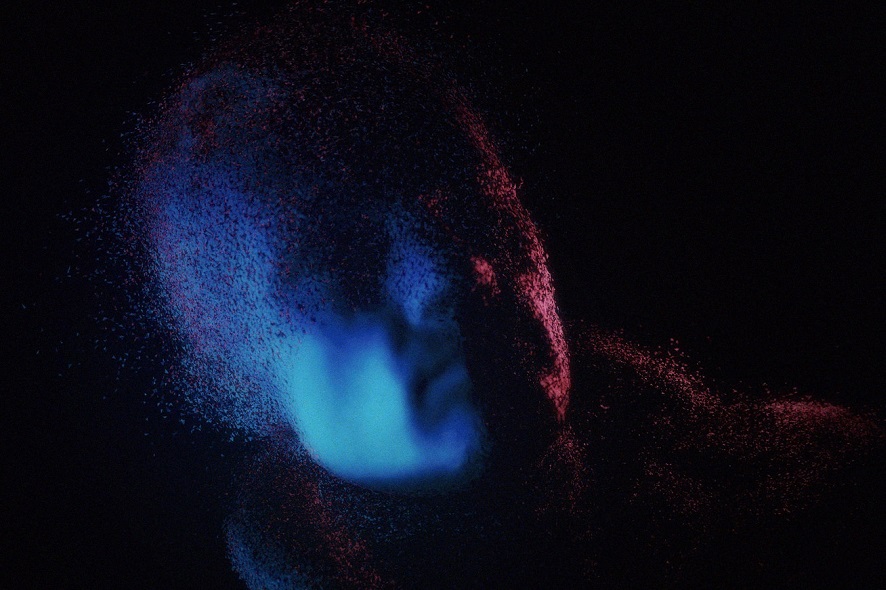
The MOMENT. Credit: Rachel Ramchurn, Richard Ramchurn.
At Ars Electronica, the artistic standpoint is always accompanied by other perspectives…
Gerfried Stocker: Ars Electronica is always situated astride the triangle of art, technology and society. Each individual one of these fields can, in its own way, only deliver certain perspectives. If we want to combine these perspectives with one another, then the result is a splendid array of overlapping areas that can provide surprises galore. We suddenly see things from divergent points of view, in a new light, because we can recognize details—and, of course, possible solutions as well—that otherwise would not have appeared. People can surprise one another, stimulate each other’s ideas, and engage in mutual provocation. This is an important aspect—provocation not only as a way to screw around and have fun, but as a motivating force, as a possibility to advance new ideas and innovation.
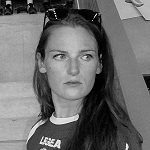
Christl Baur is a researcher and cultural producer with an interdisciplinary background in art history, cultural management, and natural science, who has been working with Ars Electronica since 2016. She is particularly interested in the conjunction of aesthetic and social practices that center on collaboration and experimentation and challenge dominant social, political, and economic protocols. Her research field encompasses topics such as video art, new media technologies, computer, biotechnology and interactive art, and she works at the nexus of art & science. Over recent years, she has developed, co-produced and delivered large-scale exhibitions and performances, research, residency & publication projects—most recently in cooperation with universities and scientific associations such as Google Arts & Culture, Microsoft, Linz Art University as well as University of Tsukuba. She works closely together with artists whose practice is situated at the interface of art, science, and technology.

Gerfried Stocker is a media artist and telecommunications engineer. In 1991, he founded x-space, a team formed to carry out interdisciplinary projects, which went on to produce numerous installations and performances featuring elements of interaction, robotics and telecommunications. Since 1995, Gerfried Stocker has been artistic director of Ars Electronica. In 1995-96, he headed the crew of artists and technicians that developed the Ars Electronica Center’s pioneering new exhibition strategies and set up the facility’s in-house R&D department, the Ars Electronica Futurelab. He has been chiefly responsible for conceiving and implementing the series of international exhibitions that Ars Electronica has staged since 2004, and, beginning in 2005, for the planning and thematic repositioning of the new, expanded Ars Electronica Center, which opened its doors in January 2009.
This year’s Ars Electronica Festival Theme Exhibition will run September 6-10, 2018 at POSTCITY Linz—the scientific-technological part, “Error, Fake & Failure,” on the 1st Upper Level; the artistic part, “Error in Progress,” in the old bunker in the basement. Consult our website for details.
To learn more about Ars Electronica, follow us on Facebook, Twitter, Instagram et al., subscribe to our newsletter, and check us out online at https://ars.electronica.art/news/en/.
